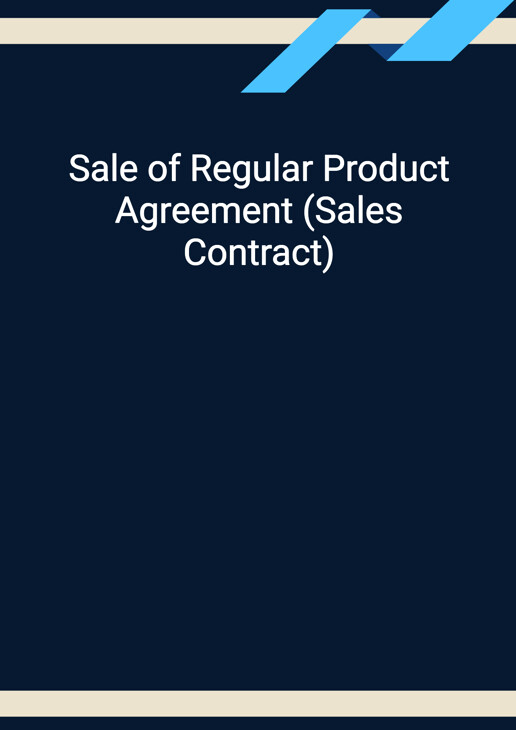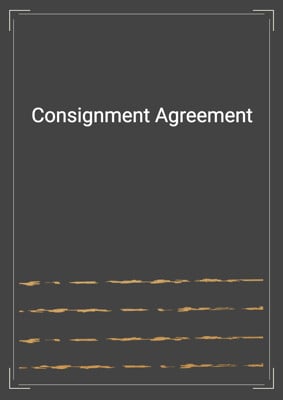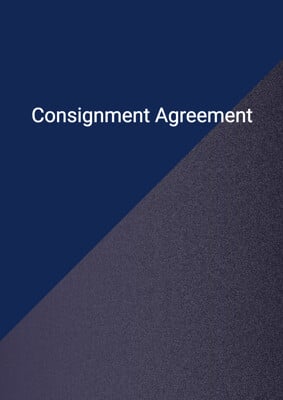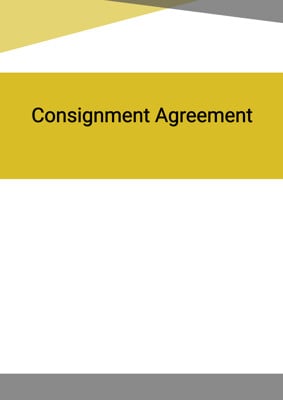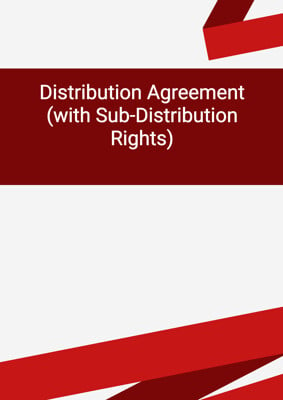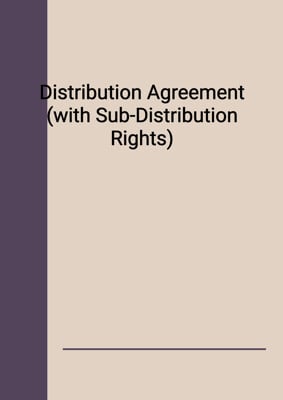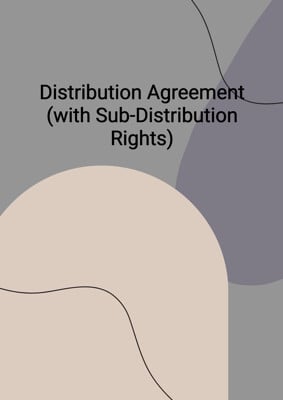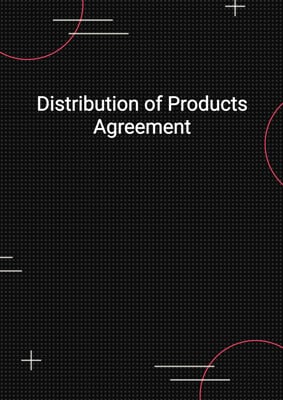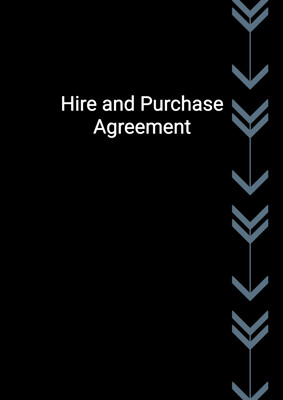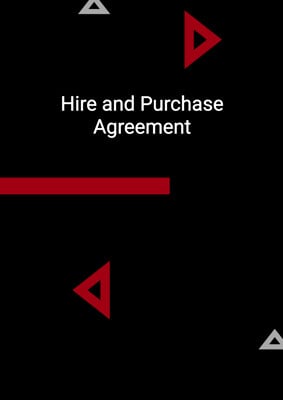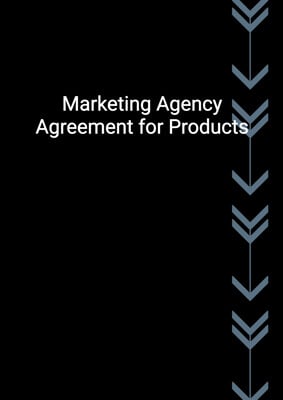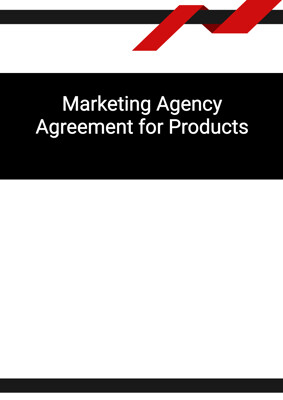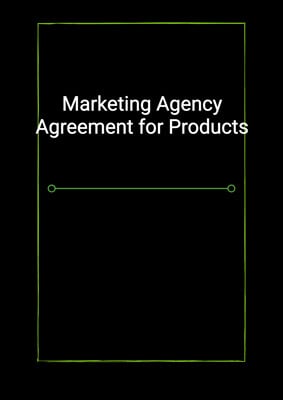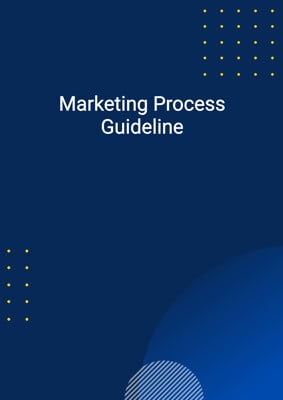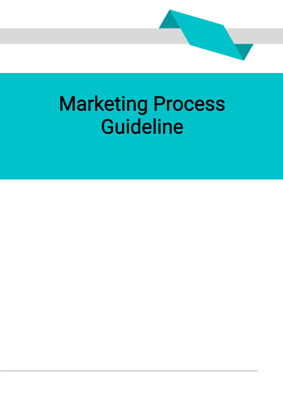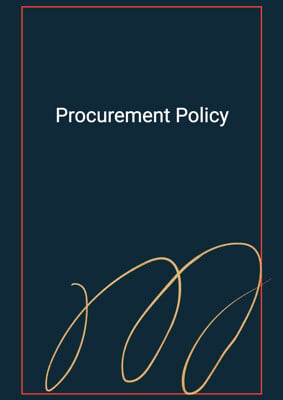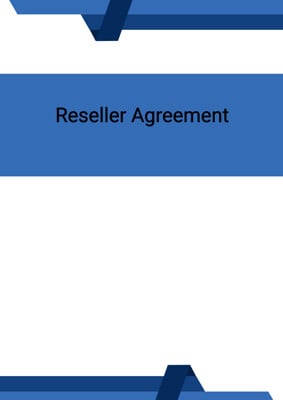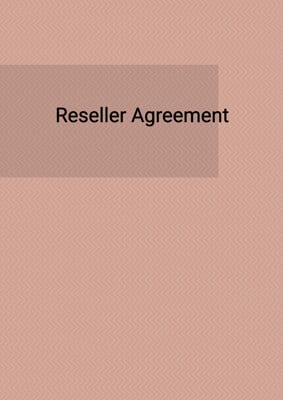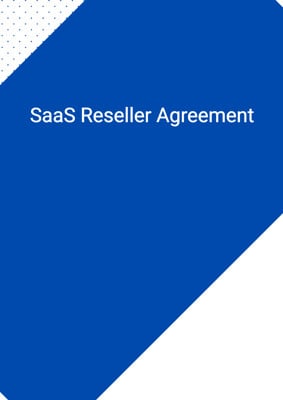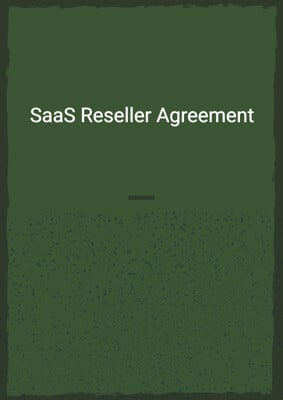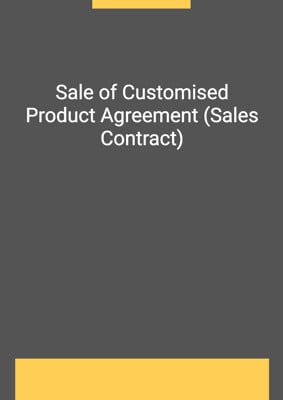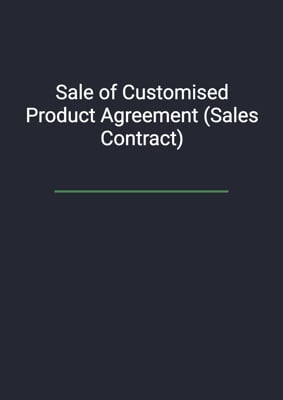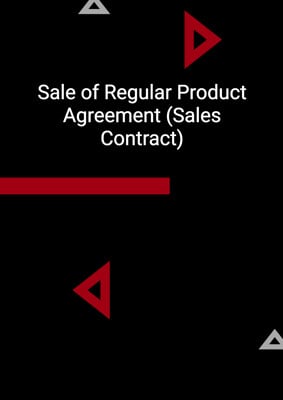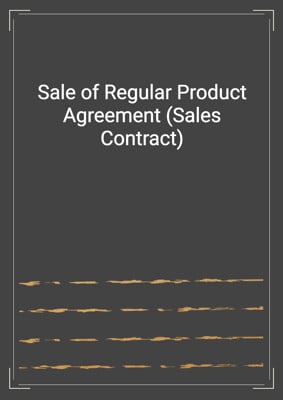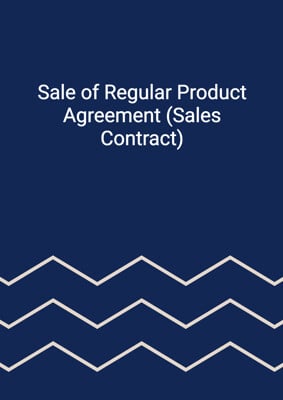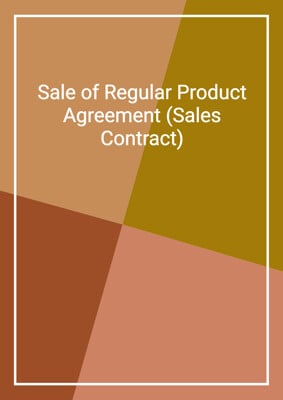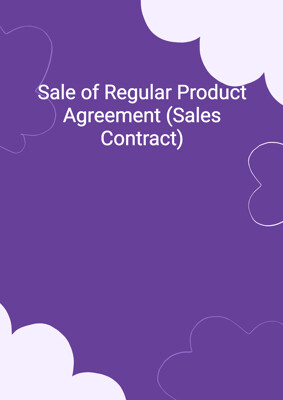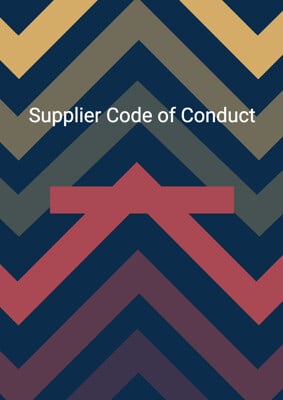How to Tailor the Document for Your Need?
01
Create Document
Fill in the details of the parties. You can click the "Fill with Member’s Information" button to complete it with information saved to your account.
02
Fill Information
Please fill in any additional information by following the step-by-step guide on the left hand side of the preview document and click the "Next" button.
03
Get Document
When you are done, click the "Get Document" button and you can download the document in Word or PDF format.
04
Review Document
Please get all parties to review the document carefully and make any final modifications to ensure that the details are correct before signing the document.
Document Preview
Document Description
The Sale of Regular Product Agreement (Sales Contract) is a legally binding document that outlines the terms and conditions for the sale and purchase of regular products between two parties, namely the seller and the buyer. This agreement is important as it establishes the rights and obligations of both parties, ensuring that they are aware of their responsibilities and can avoid any potential disputes or misunderstandings.
The entire document is divided into several sections, each serving a specific purpose. The first section, titled 'Definitions', provides the meanings of various terms used throughout the agreement. This ensures clarity and understanding between the parties.
The second section, titled 'Supply and Purchase', outlines the obligations of the seller and the buyer regarding the sale and purchase of the products. It specifies that the seller will sell and the buyer will purchase the products as ordered by the buyer. It also mentions that the seller may make improvements to the products to remain competitive and will provide labels or identification codes as requested by the buyer.
The third section, titled 'Purchase Orders', explains the process of placing purchase orders by the buyer. It states that the buyer should transmit a written purchase order to the seller, specifying the identity and quantity of products, delivery schedule, prices, and shipping instructions. It also mentions that any change requests to existing purchase orders should be communicated to the seller, who will make reasonable efforts to fulfill them.
The fourth section, titled 'Forecast and Ordering Procedure', describes the forecast data submitted by the buyer and the seller's obligation to maintain sufficient manufacturing capacity to meet the buyer's product requirements. It states that the buyer should notify the seller of its estimated orders for each calendar year and month, as well as any revisions to those estimates.
The fifth section, titled 'Delivery', explains the delivery process of the products. It states that the seller will deliver the products to the buyer according to the agreed Incoterms. It also mentions that the seller will use reasonable endeavors to deliver the products on the specified date, but time of delivery is not of the essence. It further states that any claim for shortages in shipment should be reported to the seller within thirty days.
The sixth section, titled 'Pricing', specifies the prices applicable to the products and allows the seller to vary the prices for subsequent months with prior notice to the buyer. It also mentions that the prices are exclusive of packaging, carriage, insurance, and any applicable taxes, which the buyer is liable to pay.
The seventh section, titled 'Payment', explains the payment terms for the products. It states that invoices will be issued by the seller on shipment, and payment should be made by credit transfer within a specified number of days from the date of the invoice. It also mentions that interest will be charged on overdue payments, and the seller may suspend deliveries until payment is received.
The eighth section, titled 'Product Availability', highlights the seller's obligation to maintain sufficient stocks of the products to fulfill its obligations under the agreement.
The ninth section, titled 'Term and Termination', specifies the duration of the agreement and the conditions for termination. It states that the agreement has a term of three years, renewable for subsequent one-year terms upon mutual agreement. It also mentions the right to terminate the agreement in case of default or certain events, such as liquidation or cessation of business.
The tenth section, titled 'Warranties; Limitation of Liability', outlines the seller's warranty to replace defective products and limits the seller's liability for any damages resulting from its performance or failure to perform under the agreement.
The eleventh section, titled 'Confidential Information', addresses the exchange of confidential information between the parties and the obligations to maintain confidentiality.
The twelfth section, titled 'Force Majeure', provides for the suspension of obligations in case of force majeure events beyond the reasonable control of either party.
The thirteenth section, titled 'Amendments', states that the agreement may be amended or modified by written instrument executed by both parties.
The fourteenth section, titled 'Subcontract', allows the seller to carry out its obligations through agents or subcontractors with the buyer's consent.
The fifteenth section, titled 'Assignment', prohibits the assignment or transfer of rights and benefits under the agreement without the prior written consent of the other party.
The sixteenth section, titled 'Severability', states that if any provision of the agreement is held void or unenforceable, the remaining provisions shall continue to be valid.
The seventeenth section, titled 'Notices', specifies the requirements for giving notice or formal communication under the agreement, including the addresses of the parties for such purposes.
The eighteenth section, titled 'Settlement of Disputes', encourages amicable settlement of disputes and provides for dispute resolution through negotiation and referral to senior executives of the parties. It also mentions the jurisdiction clause for resolving disputes.
The nineteenth section, titled 'Counterparts', allows the agreement to be executed in multiple counterparts, each of which shall be considered an original.
The twentieth section, titled 'No Rights for Third Parties', clarifies that third parties have no rights to enforce the terms of the agreement.
This detailed description provides a comprehensive overview of the entire document, highlighting its importance and the purpose of each section.
How to use this document?
To use this Sale of Regular Product Agreement effectively, follow these steps:
1. Familiarize yourself with the definitions provided in the 'Definitions' section to understand the meanings of key terms used throughout the agreement.
2. Review the 'Supply and Purchase' section to understand the obligations of the seller and the buyer regarding the sale and purchase of the products.
3. Understand the process of placing purchase orders by reading the 'Purchase Orders' section. Ensure that you transmit written purchase orders to the seller, specifying the necessary details such as product identity, quantity, delivery schedule, prices, and shipping instructions.
4. If any changes need to be made to existing purchase orders, follow the guidelines mentioned in the 'Purchase Orders' section and communicate the change requests to the seller.
5. Familiarize yourself with the 'Forecast and Ordering Procedure' section to understand the process of providing estimated orders for each calendar year and month. Notify the seller of any revisions to these estimates.
6. Understand the delivery process outlined in the 'Delivery' section. Ensure that you report any shortages in shipment to the seller within thirty days.
7. Review the 'Pricing' section to understand the applicable prices for the products and the seller's right to vary the prices for subsequent months. Make sure to account for packaging, carriage, insurance, and any applicable taxes when calculating the total payment.
8. Adhere to the payment terms mentioned in the 'Payment' section. Pay the invoiced amount by credit transfer within the specified number of days from the date of the invoice to avoid interest charges and potential suspension of deliveries.
9. Ensure that the seller maintains sufficient stocks of the products to fulfill its obligations under the agreement, as stated in the 'Product Availability' section.
10. Familiarize yourself with the 'Term and Termination' section to understand the duration of the agreement and the conditions for termination. Renew the agreement for subsequent terms if desired, or terminate it by providing written notice as specified.
11. Understand the warranty provisions and limitation of liability mentioned in the 'Warranties; Limitation of Liability' section. Promptly inform the seller of any alleged defects and follow the process for returning defective products.
12. Comply with the obligations regarding confidential information outlined in the 'Confidential Information' section. Use any disclosed confidential information solely for purposes consistent with the agreement.
13. Be aware of the provisions related to force majeure events mentioned in the 'Force Majeure' section. Promptly notify the other party if affected by such events and make reasonable efforts to remedy the situation.
14. Seek written agreement from both parties for any amendments or modifications to the agreement, as stated in the 'Amendments' section.
15. If the seller intends to carry out its obligations through agents or subcontractors, obtain the buyer's consent as required in the 'Subcontract' section.
16. Do not assign or transfer rights and benefits under the agreement without the prior written consent of the other party, as mentioned in the 'Assignment' section.
17. In case of disputes, follow the guidelines provided in the 'Settlement of Disputes' section. Attempt amicable settlement and, if necessary, refer the dispute to senior executives of both parties.
18. Keep in mind that third parties have no rights to enforce the terms of the agreement, as stated in the 'No Rights for Third Parties' section.
By following these steps, you can effectively use the Sale of Regular Product Agreement to establish a clear and mutually beneficial relationship between the seller and the buyer.
Not the right document?
Don’t worry, we have thousands of documents for you to choose from:
